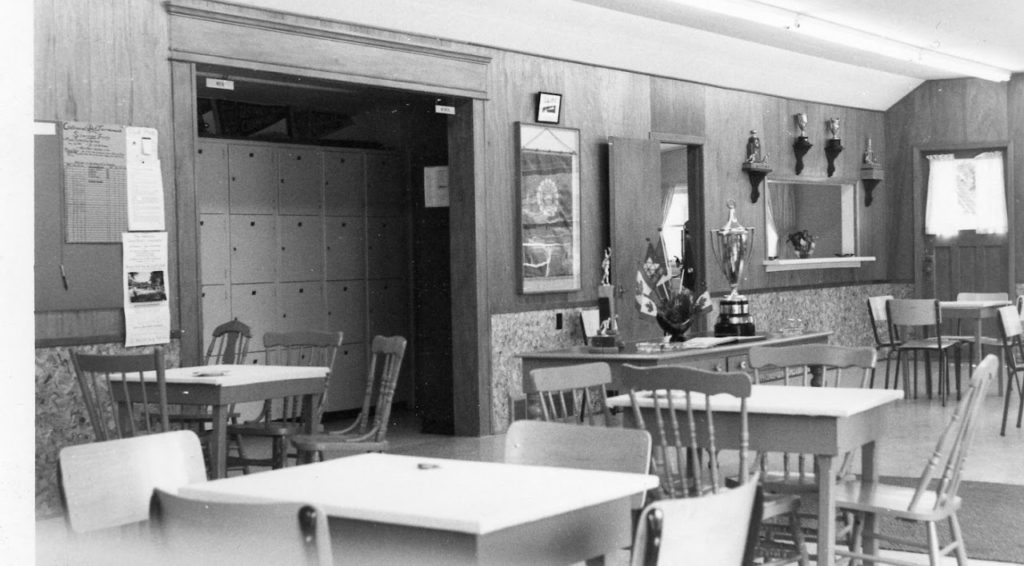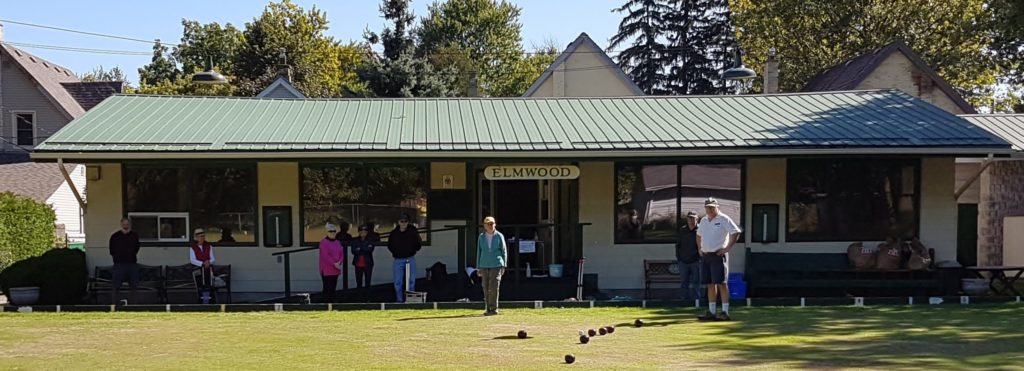History
Since 1911
A Century in the making and still going strong. The history of the Elmwood Lawn Bowling Club is sketchy, but research done by Norma Grant for the 80th anniversary of the founding and updated to 2011 by Shan Maxwell does weave an interesting story. In the beginning, as they say, there were men and women working together to get the club rolling, but alas it was initially a ‘Men Only’ club. As gender attitudes in the 20th Century evolved, so they did at Elmwood, and in 1930 women formed a separate club within Elmwood and by 1984 the men and women factions became one.
In 1911 The Club was located on Elmwood Avenue in the vicinity of the present club but the exact location is not known. In October and December of 1910 founding members began assembling land for the present site of the Club. They leased some of the properties, mainly the south green and clubhouse area.
Those original leases provided for bowling, but no ‘spiritous or fermented liquors’ were to be brought on to the property at any time and no bowling or any other pursuit was to be carried out on Sundays.
By 1914 more properties had been acquired to add the present north green area. The next year, 1915 a letter was sent to members inviting subscriptions or donations to build a Clubhouse. Dated November 30, 1915, it read as follows:
Dear Sir:
At a meeting of the Elmwood Bowling Club held Friday, November 26th, it was decided to incorporate the Club to purchase the “old” greens, and to build a clubhouse on property purchased from Mr. A.M. Hunt, being part of the lot on the north side of the present right-of-way. For this purpose subscription lists have been opened and members of the incorporation committee will receive subscriptions of five dollars ($5.00) and upwards, payable on or before March 1, 1916. All members are invited to subscribe. Any further information will be furnished by the committee.
Respectfully yours,
H.A. Kompass,
Chairman of the committee

They evidently were successful because, in 1916 the original clubhouse was constructed with tongue and groove exterior, later covered with stucco. It was built on brick posts with no exterior perimeter foundation. There was a veranda along the entire length facing the greens. The clubhouse had no heat and was used only in the summer months. Later a kerosene space heater was added and served to inadequately heat the clubhouse for card parties during the less severe winter months. Those people near the heater roasted while those further away had to don their winter attire to be reasonably comfortable. These conditions remained until 1966.



1916-1964
On February 14, 1916, a Charter was issued under the name of ‘Elmwood Club Without Share Capital’. Commencing in 1921, it appears the Club started insisting that elected Directors pay $5.00 for the right to be a Director and even issued a Share Certificate until supplies ran out. Even after that, $5.00 was collected from each new Director and remained in effect until 1966 when the practice was abandoned.
The 1916 Charter provided for the sport of Lawn Bowling, Tennis, Curling, skating, and basketball. Again, no ‘spiritous or intoxicating liquors’ were allowed…and no gambling or betting.
Originally, it was a men-only club, but in 1930 the Ladies ran a parallel organization including election of officers, finances (dues included), tournaments and annual meetings. The Men’s Club had a duplicate organization plus maintenance of, and expenses of, the clubhouse and greens. The Ladies Club made a “cash donation” at the end of the year to the Men’s Club to help cover expenses.
The Corporation (Elmwood Club) ceased filing returns with the government and the Corporation files were placed in dormant records of the Ministry of Consumer and Corporate Affairs. For the next 58 years, no formal steps were taken to correct the Letters Patent to dissolve the now dormant Corporation. But in December, 1982, the Club filed an annual return and put the Club in good standing again. Annual returns have been filed every year since. The Club still operates under the name “The Elmwood Club” (‘Bowling’ is not part of the Corporate name). To operate under the ‘Elmwood Lawn Bowling Club’ moniker a document was filed in 1983 to update the name. And it was then that the Men’s and Ladies’ clubs amalgamated.
It was an unwritten rule for years that the south end of the clubhouse was Ladies’ territory. In fact, the present folding curtain at the north end of the clubhouse originally separated the “Ladies Parlour” about 12 feet from the south wall. The parlour had an imitation fireplace on the South wall, wicker chairs and an Oriental rug.
1965-69

In 1965 the clubhouse underwent a two-year major renovation resulting in basically the present configuration. It was done in two stages – the rear or east section including the kitchen, washrooms, locker room and furnace room were stage one. The front portion or west section was completed the following year with the official opening in 1967, Canada’s Centennial. Then Alderman Fred Gosnell did the ribbon cutting.
The main work force consisted of Ron Jones, Fred Hoskin, Chester Philip, Harold Collins and Bud Grant. Long-time member George Wright, a plumber, installed all the plumbing at a great saving to the Club. Ron Jones was not only a champion bowler, but because of his stature was the ideal person to install the insulation in the tiny attic crawl space.
A bank loan was required to cover the $7,500 tab, a large sum at the time for our membership to underwrite. All members, especially the Ladies’ Club, got behind the project raising money to pay off the loan a year before the note was due.

1970-present
· New garage and equipment storage building
· Installation of irrigation for both greens
· Completion of chain-link fencing
· Installation of entrance laneway lighting
· Re-roofing the clubhouse
· Clubhouse air conditioning
· New windows and vertical blinds
· Re-modelling bathrooms


